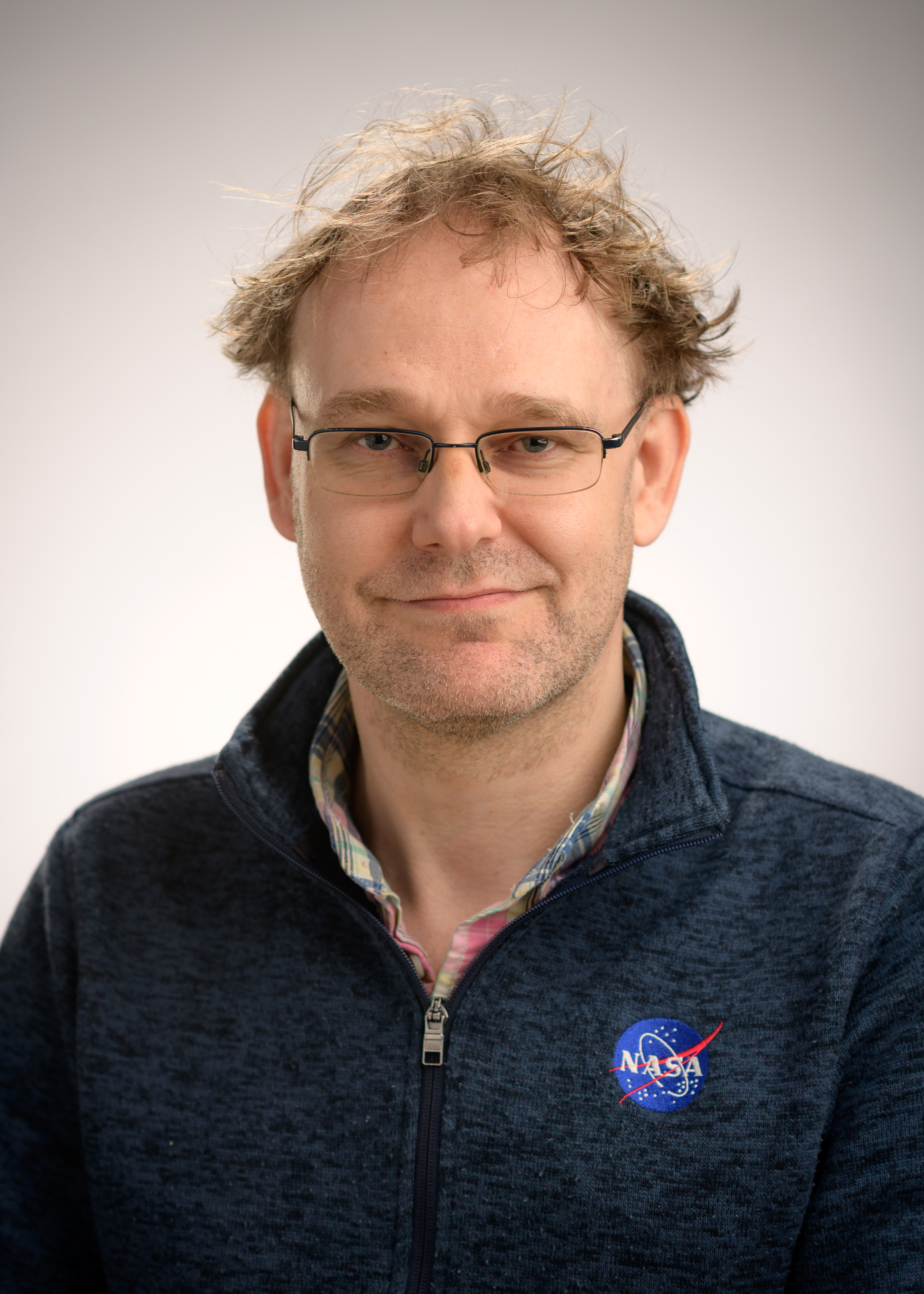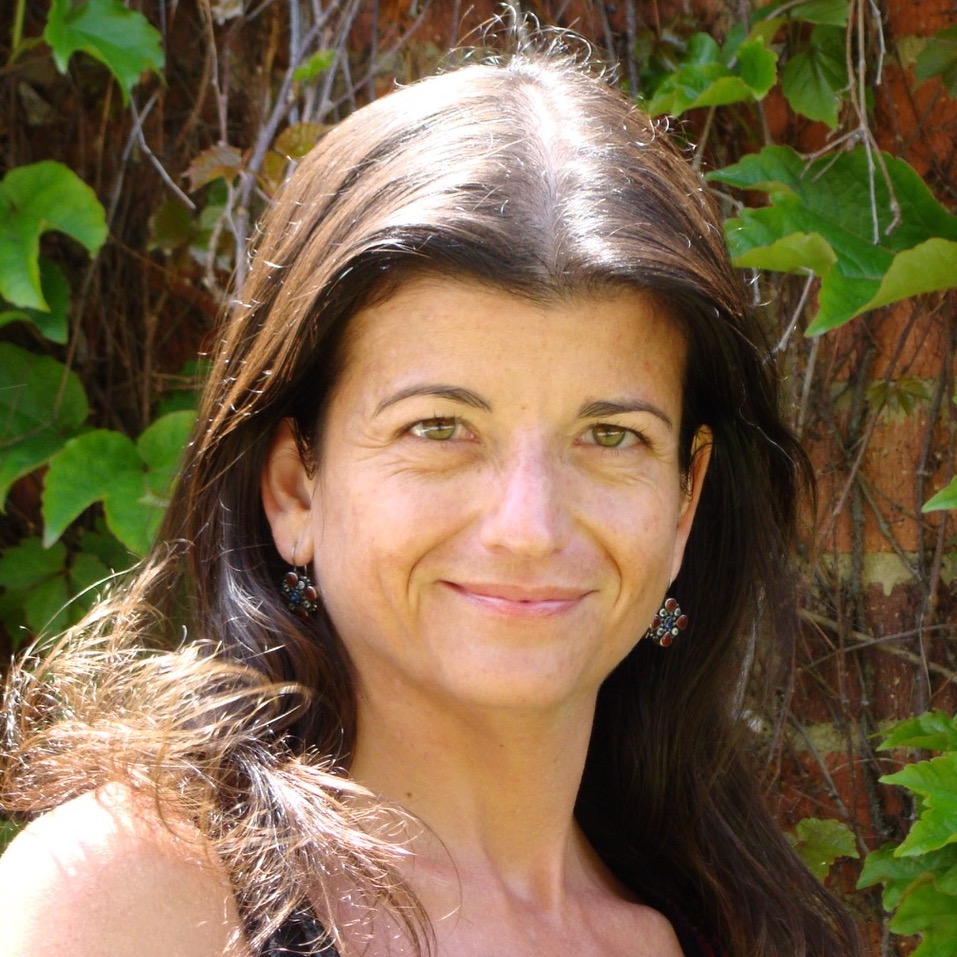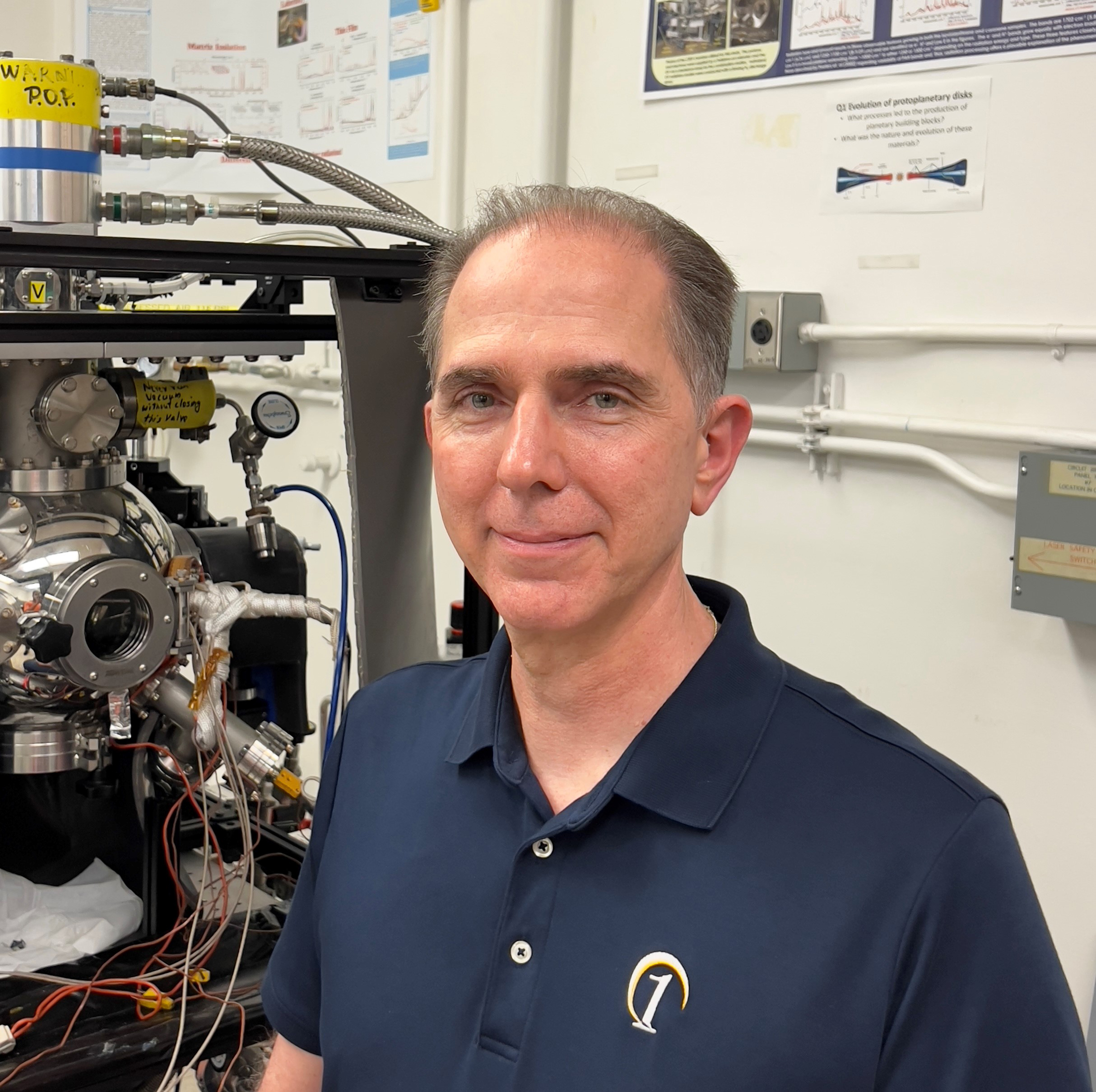You are here
Leadership
Officers:
Chair: Stefanie Milam (NASA/GSFC) [2023 - 2025]
Dr. Stefanie Milam works in the Astrochemistry Laboratory at the  NASA Goddard Space Flight Center (Greenbelt, Maryland USA). She is an expert in rotational spectroscopy, observations, and laboratory modeling of astrochemistry and molecular astrophysics of the interstellar medium, evolved stars, star formation regions, and comets with an emphasis on isotopic fractionation and astrobiology of primitive materials.
NASA Goddard Space Flight Center (Greenbelt, Maryland USA). She is an expert in rotational spectroscopy, observations, and laboratory modeling of astrochemistry and molecular astrophysics of the interstellar medium, evolved stars, star formation regions, and comets with an emphasis on isotopic fractionation and astrobiology of primitive materials.
Dr. Milam maintains a renowned observational program with radio telescopes around the world, and with space-based observatories, to routinely observe comets as part of an international collaboration. She leads the SubLIME laboratory at GSFC that is dedicated to simulate interstellar/cometary/planetary ices and detect trace species employing the same techniques used for remote observations to help constrain the chemical complexity of the ices, the amount of processing that occurs, and interpret past and present data from missions that observe ice features. Dr. Milam has been working on the James Webb Space Telescope (JWST) as Deputy Project Scientist for Planetary Science since 2014. Under this role she helped establish the next generation space telescope as a planetary science resource as well as helped implement laboratory support in general observing proposals. She is involved in a number of future missions and concepts that range from small bodies in the solar system to next generation space telescopes.
Affiliation: NASA SubLIME Collaboration
Contact: lad.chair@aas.org
Webpage: https://science.gsfc.nasa.gov/sed/bio/stefanie.n.milam
Vice Chair: Nancy Brickhouse (SAO/CfA) [2023 - 2025]
Dr.  Nancy Brickhouse is a Senior Astrophysicist in the Solar, Stellar, and Planetary Sciences Division at the Center for Astrophysics | Harvard and Smithsonian. Prior to this position, Nancy served as the Senior Science Advisor in the Director's Office and before that as the Associate Director for the Solar, Stellar, and Planetary Sciences Division. Her research focuses on solar and stellar coronae and shocks from accretion on young stars. Nancy is a member of the AtomDB team, producing high energy spectral models for collisionally ionized plasmas. She is leading the Galactic Science team on Arcus Probe, a NASA Probe Class mission proposal for high resolution X-ray spectroscopy.
Nancy Brickhouse is a Senior Astrophysicist in the Solar, Stellar, and Planetary Sciences Division at the Center for Astrophysics | Harvard and Smithsonian. Prior to this position, Nancy served as the Senior Science Advisor in the Director's Office and before that as the Associate Director for the Solar, Stellar, and Planetary Sciences Division. Her research focuses on solar and stellar coronae and shocks from accretion on young stars. Nancy is a member of the AtomDB team, producing high energy spectral models for collisionally ionized plasmas. She is leading the Galactic Science team on Arcus Probe, a NASA Probe Class mission proposal for high resolution X-ray spectroscopy.
Affiliation: Smithsonian Astrophysical Observatory (SAO), a member of the Center for Astrophysics (CfA)
Contact: LAD.vchair@aas.org
Webpage: https://www.cfa.harvard.edu/people/nancy-brickhouse
Past Chair: Murthy Gudipati (NASA Jet Propulsion Laboratory) [2023 - 2025]
 Dr. Murthy Gudipati was born and raised in southern India. He received his Ph.D. from the Indian Institute of Science, Bangalore, India in 1987. After a 3 year post-doctoral collaboration with Prof. Josef Michl (at the University of Texas at Austin), he joined University of Cologne, Germany in 1990, where he was awarded Habilitation in Physical Chemistry (tenure) in late 1998. In 2007, Dr. Gudipati joined NASA's Jet Propulsion Laboratory where he studies the evolution of ices in the universe.
Dr. Murthy Gudipati was born and raised in southern India. He received his Ph.D. from the Indian Institute of Science, Bangalore, India in 1987. After a 3 year post-doctoral collaboration with Prof. Josef Michl (at the University of Texas at Austin), he joined University of Cologne, Germany in 1990, where he was awarded Habilitation in Physical Chemistry (tenure) in late 1998. In 2007, Dr. Gudipati joined NASA's Jet Propulsion Laboratory where he studies the evolution of ices in the universe.
Dr. Gudipati's research interests can be broadly defined as understanding the physics and chemistry of interstellar and Solar System ices through laboratory simulations, observations and instrumentation. His research in recent years has focused on physics and chemistry of cryogenic ices. Knowledge acquired through laboratory experiments on ices is crucial in order to develop next generation instrumentation concepts for orbiter remote sensing, in-situ lander, rover, or manned missions.
Affiliation: NASA Jet Propulsion Laboratory
Contact: lad.pastchair@aas.org
Linkedin: https://science.jpl.nasa.gov/people/Gudipati/
Treasurer: Christiaan Boersma (NASA Ames Research Center) [2022 - 2025]
Dr. Christiaan Boersma received his PhD in Astronomy (thesis) in 2009  and was then awarded a NASA Postdoctoral Program fellowship with the Astrophysics & Astrochemistry Laboratory Group at NASA Ames Research Center. After concluding this fellowship in 2012, he moved to the San José State University Research Foundation position he currently holds in support of a collaboration with the NASA Ames Astrophysics and Astrochemistry Laboratory Group. Dr. Boersma's research focuses on the role of polycyclic aromatic hydrocarbons (PAHs) in a multitude of astronomical environments, with special interest for intermediate-mass star-forming regions. He conducts his research through analyzing and interpreting astronomical data obtained by today's state-of-the-art ground-, air- and space-based observatories, e.g., VISIR, SOFIA and Herschel, using a combination of laboratory and synthesized spectroscopic data. The NASA Ames PAH IR Spectroscopic Database (PAHdb) plays an important part in his research. Dr. Boersma had a leading role in the assembly and construction of PAHdb and its associated tools. PAHdb now guides the development of new methodologies in analyzing astronomical data, which are particularly relevant to data returned by future astronomical observatories, like the JWST.
and was then awarded a NASA Postdoctoral Program fellowship with the Astrophysics & Astrochemistry Laboratory Group at NASA Ames Research Center. After concluding this fellowship in 2012, he moved to the San José State University Research Foundation position he currently holds in support of a collaboration with the NASA Ames Astrophysics and Astrochemistry Laboratory Group. Dr. Boersma's research focuses on the role of polycyclic aromatic hydrocarbons (PAHs) in a multitude of astronomical environments, with special interest for intermediate-mass star-forming regions. He conducts his research through analyzing and interpreting astronomical data obtained by today's state-of-the-art ground-, air- and space-based observatories, e.g., VISIR, SOFIA and Herschel, using a combination of laboratory and synthesized spectroscopic data. The NASA Ames PAH IR Spectroscopic Database (PAHdb) plays an important part in his research. Dr. Boersma had a leading role in the assembly and construction of PAHdb and its associated tools. PAHdb now guides the development of new methodologies in analyzing astronomical data, which are particularly relevant to data returned by future astronomical observatories, like the JWST.
Affiliation: NASA Ames Research Center / San Jose State University
Contact: LAD.Treasurer @ aas.org
Linkedin: www.linkedin.com/in/christiaanboersma
Secretary: Rachel L. Smith (NC Museum of Natural Sciences/Appalachian State University) [2022 - 2025]
 Dr. Rachel Smith is an observational astronomer and curator based at the North Carolina Museum of Natural Sciences and Appalachian State University. She observes young stellar objects using ground-based telescopes such as Keck and the Infrared Telescope Facility, as well as the airborne observatory, SOFIA, to investigate prebiotic and protoplanetary molecules in disks and envelopes across the Galaxy. She is currently working with experimentalists and theorists to attain a more comprehensive understanding of the astronomical observations, and is very interested in interdisciplinary approaches toward answering big questions. Rachel also enjoys sharing the excitement of science with the public, and engaging her students in her research and outreach projects.
Dr. Rachel Smith is an observational astronomer and curator based at the North Carolina Museum of Natural Sciences and Appalachian State University. She observes young stellar objects using ground-based telescopes such as Keck and the Infrared Telescope Facility, as well as the airborne observatory, SOFIA, to investigate prebiotic and protoplanetary molecules in disks and envelopes across the Galaxy. She is currently working with experimentalists and theorists to attain a more comprehensive understanding of the astronomical observations, and is very interested in interdisciplinary approaches toward answering big questions. Rachel also enjoys sharing the excitement of science with the public, and engaging her students in her research and outreach projects.
Affiliation: NC Museum of Natural Sciences/Appalachian State University
Contact: lad.secretary @ aas.org
Website: https://naturalsciences.org/staff/rachel-smith
Members-at-Large:
Carrie Anderson (NASA Goddard Space Flight Center) [2022 - 2025, Planetary]
Dr. Carrie Anderson is a planetary astronomer in the Planetary Systems Laboratory at NASA Goddard Space Flight Center. She has a B.S. in Physics from Arizona State University and an M.S. and Ph.D. in Astronomy from New Mexico State University. She is an expert in remote sensing and radiative transfer retrievals of planetary atmospheres, primarily in the areas of thermal structure and composition, using space- and ground-based data in the visible, near-IR, mid-IR, far-IR, and submillimeter spectral regions. As a Cassini CIRS Co-Investigator, Dr. Anderson was heavily engaged in the Phase-E part of the Cassini/Huygens mission in the Saturn system through both data analyses and Cassini CIRS instrument operations. She also leads the Spectroscopy for Planetary ICes Environments (SPICE) laboratory, which is dedicated to simulating the effects of ices suspended within planetary atmospheres, necessary to interpret remote sensing observations.
Goddard Space Flight Center. She has a B.S. in Physics from Arizona State University and an M.S. and Ph.D. in Astronomy from New Mexico State University. She is an expert in remote sensing and radiative transfer retrievals of planetary atmospheres, primarily in the areas of thermal structure and composition, using space- and ground-based data in the visible, near-IR, mid-IR, far-IR, and submillimeter spectral regions. As a Cassini CIRS Co-Investigator, Dr. Anderson was heavily engaged in the Phase-E part of the Cassini/Huygens mission in the Saturn system through both data analyses and Cassini CIRS instrument operations. She also leads the Spectroscopy for Planetary ICes Environments (SPICE) laboratory, which is dedicated to simulating the effects of ices suspended within planetary atmospheres, necessary to interpret remote sensing observations.
Affiliation: NASA Goddard Space Flight Center
Contact: carrie.m.anderson@nasa.gov
Website: https://science.gsfc.nasa.gov/sed/bio/carrie.m.anderson/
Ami DuBois (U.S. Naval Research Laboratory) [2022 - 2025, Plasmas]
Dr. Ami DuBois is a research physicist at the U.S. Naval Research Laboratory (NRL) in Washington, D.C., where her research focuses on connecting laboratory studies of plasma compression and velocity shear-driven waves to the dynamics occurring in thin current sheets that contribute to magnetic reconnection in space plasmas. She is also interested in nonlinear wave-particle interactions in the radiation belts and the development of novel diagnostics for use in the laboratory and space. Ami received her B.S. in physics in 2007 from the Florida Institute of Technology, her Ph.D. in physics from Auburn University in 2013, and spent 3 years as a post-doctoral research associate at the University of Wisconsin-Madison.
Affiliation: US Naval Research Laboratory
Contact: ami.dubois@nrl.navy.mil
Website: https://www.linkedin.com/in/amidubois/
Brett McGuire (Massachusetts Institute of Technology) [2021 - 2024, Molecules]
 Dr. Brett McGuire received his B.S. in Chemistry from the University of Illinois at Urbana-Champaign in 2009 and his Ph.D. in Physical Chemistry from the California Institute of Technology in 2014. He was a National Radio Astronomy Observatory (NRAO) Jansky Fellow and then a NASA Hubble Fellow from 2014-2020 at the NRAO and the Center for Astrophysics | Harvard & Smithsonian. In 2020, he started as an Assistant Professor of Chemistry at the Massachusetts Institute of Technology. Research in the McGuire Group uses the tools of physical chemistry, molecular spectroscopy, and observational astrophysics to understand how the chemical ingredients for life evolve with and help shape the formation of stars and planets.
Dr. Brett McGuire received his B.S. in Chemistry from the University of Illinois at Urbana-Champaign in 2009 and his Ph.D. in Physical Chemistry from the California Institute of Technology in 2014. He was a National Radio Astronomy Observatory (NRAO) Jansky Fellow and then a NASA Hubble Fellow from 2014-2020 at the NRAO and the Center for Astrophysics | Harvard & Smithsonian. In 2020, he started as an Assistant Professor of Chemistry at the Massachusetts Institute of Technology. Research in the McGuire Group uses the tools of physical chemistry, molecular spectroscopy, and observational astrophysics to understand how the chemical ingredients for life evolve with and help shape the formation of stars and planets.
Affiliation: Massachusetts Institute of Technology
Contact: brettmc@mit.edu
Website: https://chemistry.mit.edu/profile/brett-mcguire/
Dawn Williams (University of Alabama) [2021 - 2024, High Energy Particles]
 Dr. Dawn Williams received her B.S. in Astronomy from the University of Southern California and her Ph. D. in Astronomy from UCLA. She did her postdoctoral work at Penn State University, where she joined the IceCube Neutrino Observatory Collaboration. She joined the faculty of the Department of Physics and Astronomy at the University of Alabama in 2008. Her research interests include detector calibration and the search for high energy tau neutrinos in IceCube. She served as the Analysis Coordinator for the IceCube collaboration from 2017 to 2019 and currently serves as the Level 2 Lead for Calibration and characterization for the IceCube Upgrade.
Dr. Dawn Williams received her B.S. in Astronomy from the University of Southern California and her Ph. D. in Astronomy from UCLA. She did her postdoctoral work at Penn State University, where she joined the IceCube Neutrino Observatory Collaboration. She joined the faculty of the Department of Physics and Astronomy at the University of Alabama in 2008. Her research interests include detector calibration and the search for high energy tau neutrinos in IceCube. She served as the Analysis Coordinator for the IceCube collaboration from 2017 to 2019 and currently serves as the Level 2 Lead for Calibration and characterization for the IceCube Upgrade.
Affiliation: University of Alabama
Contact: drwilliams3@ua.edu
Website: https://physics.ua.edu/profiles/dawn-r-williams/
Andrew Mattioda (NASA Ames Research Center) [2023 - 2026, Dust & Ices]

Dr. Andrew L. Mattioda was born and raised in Southeastern Oklahoma. He is a physical chemist and astrochemist with expertise in molecular spectroscopy (Raman and infrared). He conducts laboratory experiments aimed at understanding interstellar and planetary system chemical processes, especially those involving PAH (polycyclic aromatic hydrocarbon) molecules.
Dr. Mattioda heads the ICEE (In situ Carbon Evolution Experiments) facility. The laboratory employs Raman, infrared and mass spectroscopic techniques to investigate the chemistry of dust and ices in the ISM (interstellar medium) and on planetary bodies within the solar system. Dr. Mattioda played a prominent role in the development of the NASA Ames PAH IR Spectroscopic Database (PAHdb), which hosts theoretical and experimental PAH infrared spectra for use in analyzing astronomical observations. He is currently leading the development of the Raman Spectral Database (Ramdb), which is dedicated to providing Raman spectra relevant to the space science community. Dr. Mattioda was one of the lead scientists on the O/OREOS (Organisms/Organics Exposure to Orbital Stresses) Astrobiology mission, which utilized UV spectroscopy to investigate how organic molecules are modified in space. He is currently involved in several mission concepts focused on investigating the organic chemistry occurring within the solar system.
Affiliation: NASA Ames Research Center
Contact: andrew.mattioda@nasa.gov
Website: https://www.nasa.gov/ames/spacescience-and-astrobiology/andrew-mattioda
Catherine Deibel (Louisiana State) [2023 - 2026, Nuclear]

Dr. Catherine Deibel is a professor in the Department of Physics & Astronomy at Louisiana State University whose research is in the field of experimental nuclear astrophysics. After receiving her PhD in Physics from Yale University, she was a Joint Institute for Nuclear Astrophysics (JINA) visiting research associate at Argonne National Laboratory from 2008-2011 before joining the faculty at LSU. Her research focuses on determining the nuclear reaction rates that drive H- and He-rich stellar explosions, such as classical novae, X-ray bursts, and Type Ia Supernovae through direct and indirect nuclear cross section measurements at accelerator facilities around the world. She also works towards making physics and astronomy an inclusive and welcoming field.
Affiliation: Louisiana State University
Contact: deibel@lsu.edu
Website:https://www.lsu.edu/physics/people/faculty/deibel.php
Amy Gall (SAO/CfA) [2023 - 2026, Atoms]
 Dr. Amy Gall is an astrophysicist in the High Energy Astrophysics Division at the Center for Astrophysics | Harvard & Smithsonian. She obtained a B.S in Mechanical Engineering from Georgia Institute of Technology and a Ph.D in Physics from Clemson University. Her research focuses on producing atomic data from spectroscopic studies of highly charged ions produced with an electron beam ion trap. The atomic data are used test complex atomic calculations and act as benchmarks in astrophysical models used to interpret observations of warm and hot astrophysical plasmas.
Dr. Amy Gall is an astrophysicist in the High Energy Astrophysics Division at the Center for Astrophysics | Harvard & Smithsonian. She obtained a B.S in Mechanical Engineering from Georgia Institute of Technology and a Ph.D in Physics from Clemson University. Her research focuses on producing atomic data from spectroscopic studies of highly charged ions produced with an electron beam ion trap. The atomic data are used test complex atomic calculations and act as benchmarks in astrophysical models used to interpret observations of warm and hot astrophysical plasmas.
Affiliation: Smithsonian Astrophysical Observatory (SAO), part of the Center for Astrophysics (CfA)
Contact: amy.gall@cfa.harvard.edu
Website: https://pweb.cfa.harvard.edu/people/amy-gall
